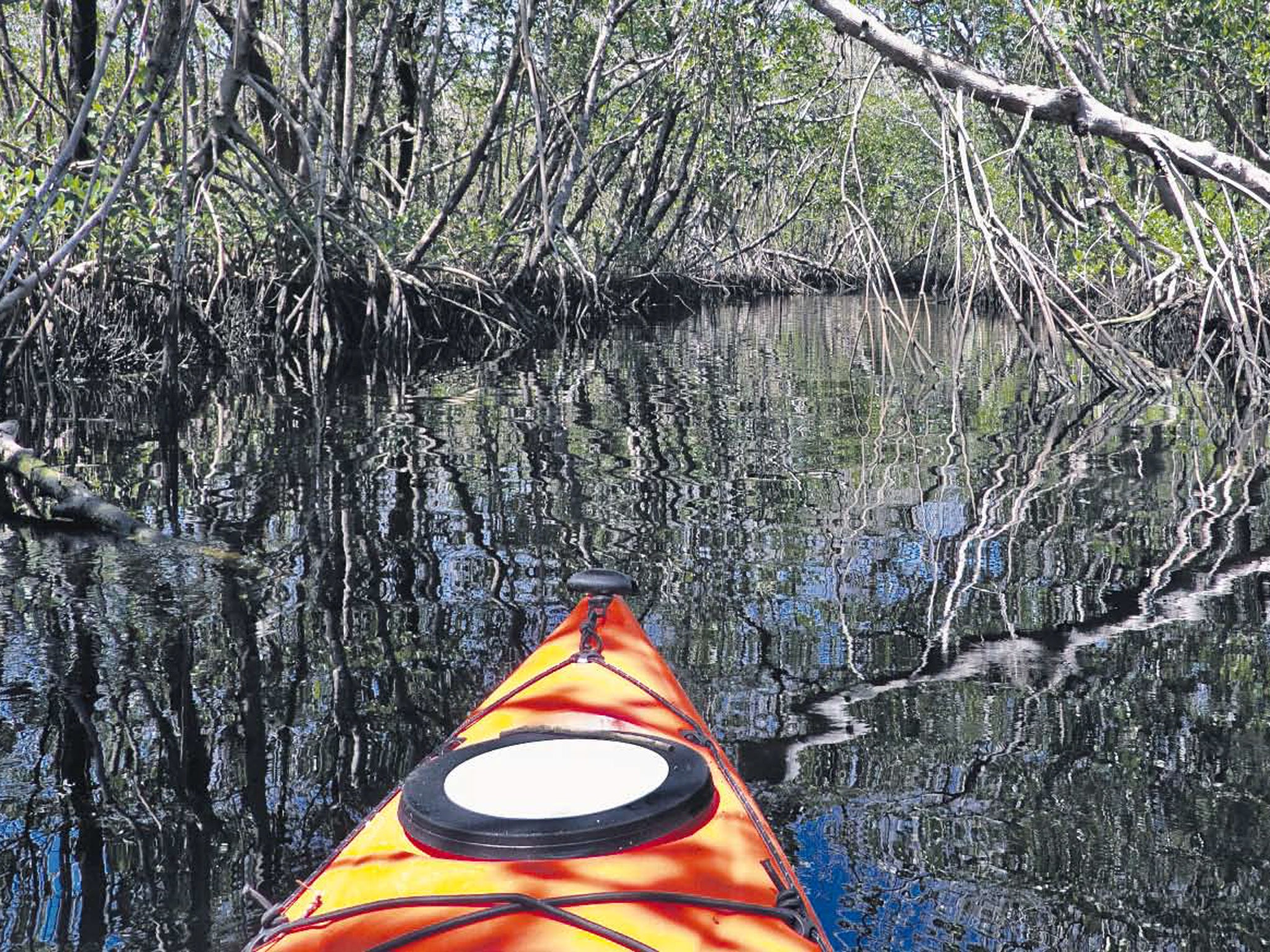The Lonely Planet Adventure: Florida at its wildest
Paddle a canoe along the Wilderness Waterway and get close to the exotic creatures inhabiting the unique ecosystem of the Everglades National Park

The Wilderness Waterway is to paddlers what the Appalachian Trail is to hikers: 159km (a minimum seven days of hard paddling) that snakes through one of America's most beautiful and least understood national parks, offering unparalleled wildlife close-ups and stunning scenery every bit of the way. The journey is a bit like paddling back in time through a part of American history – most of Florida used to look like this before the invention of bulldozers and backhoes enabled the destruction of swampland on an epic scale.
As recently as the early 20th century, a thin sheet of water covered as much as 28,500sq km, creating one of the country's most unique habitats and harbouring unusual animals and plants. Bromeliads, orchids, palms and even hardwood forests thrived, providing habitats for all sorts of animals that nowadays are on the brink of extinction, such as the American crocodile and Florida panthers, which currently number only about 100. The now ubiquitous alligator has a commanding reign over this amazing "River of Grass".
The area was first written about by Hugh L Willoughby in 1898, after he made a west-east crossing of the vast sawgrass prairies in 1897. Save for the chickees (raised wooden platforms for camping), the Wilderness Waterway looks much as it did then. The communities of "Gladesmen" and indigenous tribes may have gone, but wildlife still rules, and the only form of transport in this roadless expanse remains watercraft: boat, skiff, kayak or canoe.
The Everglades National Park was established in 1947 to protect this serene and wild ecosystem. Interestingly, the park's creation was in large part due to the efforts of a developer, Ernest F Coe. He envisioned an expanse of 2,000,000 acres and was so adamant about these boundaries (which even included Key Largo) that the creation of the park was almost scuttled completely. Even so, it remains the largest protected area east of the Mississippi River.
The adventure unfolds
The put-in for a west-east journey starts at the Gulf Coast Visitor Center in Everglades City. Clearly marked signs then guide paddlers across the waterways, lagoons, inlets and sawgrass prairies, with camping on beaches or chickees.
The journey goes through almost all the ecosystems the park has to offer, starting with miles of mangroves and tannin-stained water. Little blue herons and snowy egrets erupt with squawks from the shallows as your vessel slips by, the verdant mangroves subduing the sounds of paddling. The mangroves slowly melt into coastal estuary, where salt and brackish water mix, and manatee and sea turtle sightings are common. Here one can look out across Florida Bay at the Ten Thousand Islands. All but a handful of these islands are uninhabited. While many are open to campers, it's vital to obtain park permission prior to embarking on your trip and to stick to designated areas.
Gradually you'll trade the bay for sawgrass prairie: seemingly never-ending stretches of waist- to head-high grass like the prairies out west, except here they grow out of a paddy that's dry only in certain areas and at certain times of the year. At the highest points you'll find tropical hardwood "hammocks" (stands of trees) which support larger mammals – look for deer, feral pigs, raccoons and (for the very lucky) a glimpse of the endangered Florida panther.
During the last days of the journey, camping is on chickees, which require some careful manoeuvring and preparation for tide, wind and current so as to not damage the canoes. Capable and experienced paddlers will find the seven to eight days as rewarding as a canoe trip can be.
Detour
A worthwhile side trip is to Big Cypress National Preserve, which borders part of Everglades National Park. One quick peek and you'll see why there's a line between the two: massive cypress trees blanketed with Spanish moss (a kind of lichen) create a totally different ecosystem from the Sawgrass Prairie and low-lying keys, yet this too is primarily swampland. Canoe any of the five NPS Big Cypress day trips or ask at the ranger station if you plan a longer stay.
This is an extract from 'Great Adventures', from Lonely Planet (£29.99). Readers can buy a copy for £25, including UK P&P, by going to shop.lonelyplanet.com
Distance: 159km
Location: Everglades National Park, Florida, United States Time commitment: One week
Essential tip: Watch out for alligators
Essential Experiences
* Marvelling at unbroken vistas of sawgrass prairie as you glide through mangrove channels, lakes and lagoons.
* Encountering close up a host of birds and animals that many people never see.
* Enjoying the utter stillness that comes from being as far away from motorised vehicle traffic as one can be.
* Paddling around Florida's Ten Thousand Islands, all but a handful uninhabited.
* Camping on chickee stilt platforms at nightfall beneath a canopy of glittering stars.
* Travelling through one of America's most epic waterways that – thankfully – has been pristinely preserved, affording a look at what most of Florida looked like for millennia.
Subscribe to Independent Premium to bookmark this article
Want to bookmark your favourite articles and stories to read or reference later? Start your Independent Premium subscription today.

Join our commenting forum
Join thought-provoking conversations, follow other Independent readers and see their replies